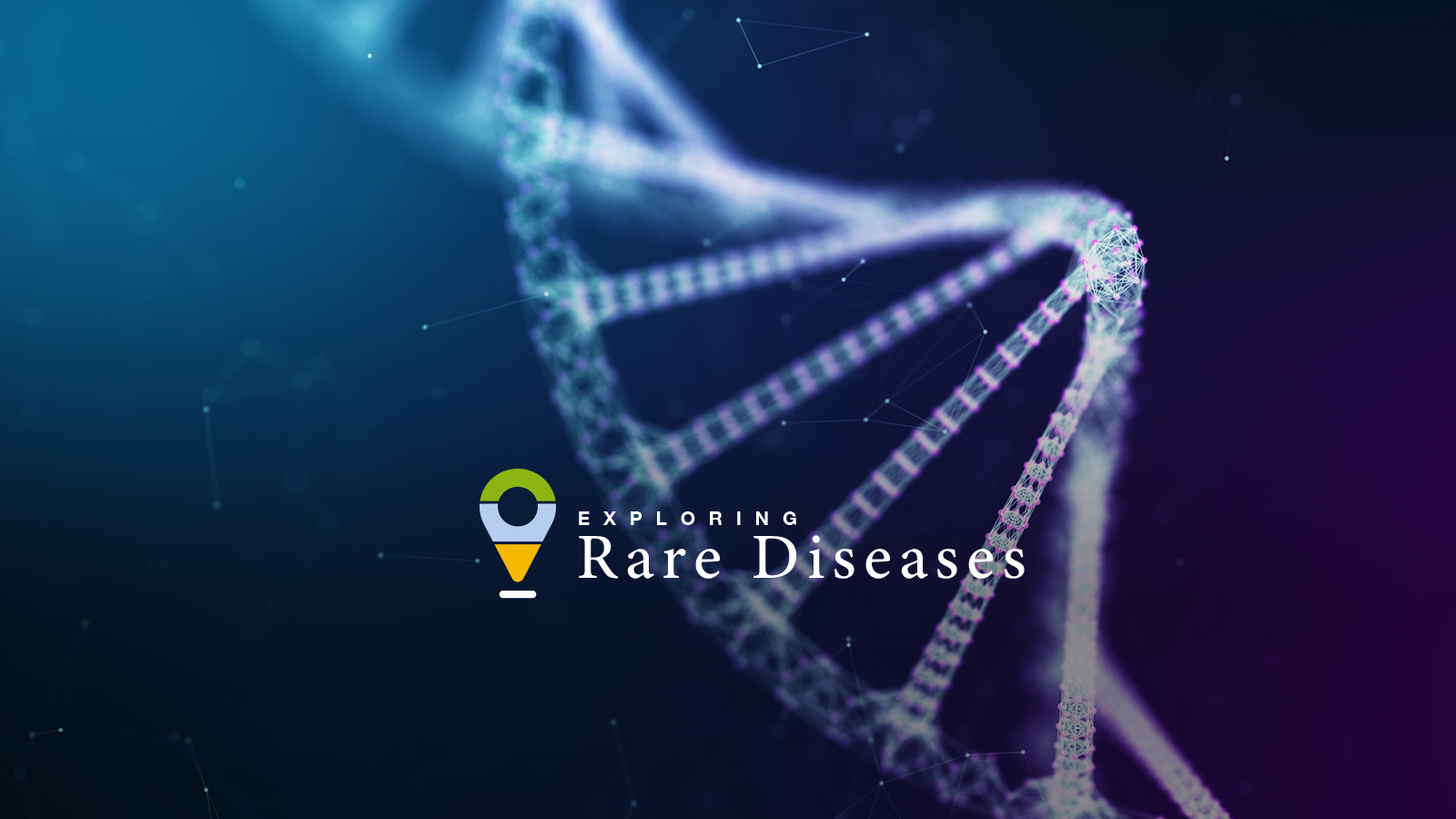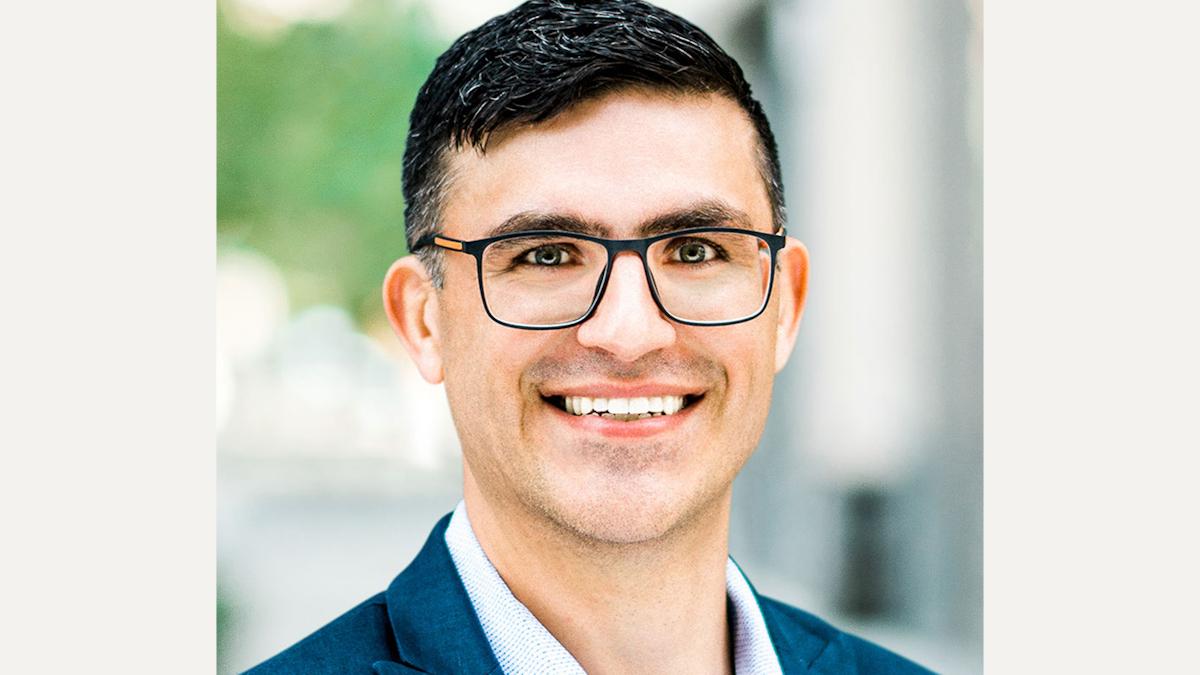Searching for answers in rare epilepsy

Geneticist Dr Charles Steward has spent his career studying the human genome – but his work became much more personal when his children were diagnosed with severe neurological diseases. Charlie told pharmaphorum how his search for a genetic cause has led him to straddle the divide between scientist and patient advocate.
For some people, a job is more than just a job.
Charlie has spent more than 26 years working on the human genome – 22 of which were spent at the Wellcome Sanger Institute, helping to assemble the human genome and trying to understand the function of the genes contained within it. He is currently the patient advocacy and engagement lead at Congenica, a digital health company that is investigating the genetic basis of rare diseases.
However, in 2013, Charlie's life changed dramatically when his daughter, who has cerebral palsy, was also diagnosed with a catastrophic form of epilepsy called West Syndrome.
“My daughter was born at 30 weeks and spent her first month in intensive care. She developed fine for the first six months of her life,” he says, “but then she stopped smiling, she stopped giggling, and stopped taking an interest in her surroundings. She had a glazed look in her eyes, almost like she was blind.
“She was originally diagnosed with gastrointestinal reflux – which is a common misdiagnosis for infants with epilepsy. Shortly after that, she started making jackknife movements. We videoed her and went to A&E at Addenbrooke’s Hospital in Cambridge, UK, where she received an accurate diagnosis.”
Doctors were able to control the seizures, and Charlie’s daughter started to progress normally again, but a year and a half later she had another serious seizure at night.
“Everything the 100,000 Genomes Project does has to be rubber-stamped by the patients”
“Luckily, we had a night vision camera in her room,” says Charlie. “If we hadn't spotted it, we don't know what the outcome would have been.”
“She went into status epilepticus – which is when a seizure doesn't stop of its own accord (normally seizures stop after five to ten minutes). The only way to stop the seizure is to administer emergency medication. Luckily the paramedics, who arrived within 10 minutes of us phoning the emergency services, were able to do that, and investigations at the hospital found it was essentially a one-off.
“Touch wood, since then, we haven’t really seen anything of concern – but we know she’s very, very likely to have epilepsy again in the future, so we have to remain vigilant. That’s the thing about epilepsy – it’s completely unpredictable.”
After these experiences, Charlie says he has realised that his goal in life is to understand and spread awareness of rare diseases like his daughter’s. Because of his work at Sanger, he was inspired to start an international collaboration to investigate how the genome can be responsible for such devastating disorders.
Searching for answers
At the time, the Sanger Institute was working on the Deciphering Developmental Disorders study (DDD), which looked at the approximately 1-2% of the genome that is responsible for making proteins in patients with rare diseases. Technology from the DDD study was eventually spun out of the Institute as a startup company, Congenica, where Charlie currently works.
Charlie’s daughter was enrolled into the DDD study to try and understand the genetic basis for her epilepsy – and Charlie joined Congenica himself as the patient advocacy and engagement lead.
“It seemed the perfect fit to help me get closer to patients and learn about how precision medicine is evolving.”
For children like Charlie’s daughter, genomic studies, such as DDD, use trio analysis of her and her parents’ genes to try and determine which mutations are causing her disease.
“They look at Mum, Dad and the child to try and find mutations that might be responsible for the condition,” Charlie says. “However, some mutations are of particular interest. De novo mutations arise in the child after conception, so they’re not present in Mum or Dad. We know that neurodevelopmental disorders specifically have a very high frequency of such mutations.
“If you see a variant that isn’t in Mum’s and Dad’s genes but see one that sits in the child in a gene known to be associated with epilepsy, that's of massive interest to clinicians.”
Unfortunately, nothing was found in the DDD study, so Charlie’s daughter was also enrolled into the UK 100,000 Genomes Project (GP), which is using whole genome sequencing as a way to diagnose and understand rare genetic diseases.
Charlie is a member of the UK 100,000 GP study’s dedicated Participant Panel, formed to hold the project to account.
“Everything the project does has to be rubber-stamped by the patients,” he says. “It’s a really clever idea, and it makes perfect sense, as this is a project about the patients and what they want. Even when leaders of projects like this have the best intentions, they often still won’t be aligned with what patients want to see.”
The panel meets four times a year and is kept updated about the project’s work and how it may be used.
“The kind of data produced by the project is obviously very valuable to pharma and researchers,” says Charlie, “so we’re here to make sure that data is used in a responsible way and is given to the right people.
“We have a very powerful voice. It’s absolutely essential that the patient is always at the heart of these kinds of endeavours.”
His daughter was expedited through the UK 100,000 GP as Charlie’s wife was pregnant with their son, but again she had a negative result.
“My son had a very similar birth to my daughter,” says Charlie. “He was in intensive care for two months after being born, when it was discovered that he'd suffered catastrophic brain damage during birth.
“He was then enrolled in another ground-breaking study at Addenbrooke's Hospital, Cambridge, called the Next Generation Children study, which specifically looks at sequencing the genomes of very sick infants in neonatal and pediatric intensive care.
“That project is able to turn around a genetic report in as quickly as two weeks. That can be life changing, because if you understand the genetic basis of the child's illness early on and you’re able to change their care and therapy quickly enough, you can often massively increase the chances of a better outcome.”
“I’m convinced that there must be something hiding in the genome that current technologies aren't able to find”
Every person has as many as five million different variants in their genome with respect to each other, so making sense of those variants that are benign and those that are pathogenic is incredibly hard.
Platform’s like Congenica’s help clinicians to do this by filtering out the many millions of harmless variants, through computer algorithms and input from highly trained clinical scientists.
“This can reduce the time to diagnosis from potentially years to a matter of minutes, which is just astonishing,” says Charlie.
Unfortunately, Charlie has still not been able to find answers to his children’s conditions from any of the studies they have been involved with.
“We don't have a genomic diagnosis for them. It's possible that it's not a genetic disorder, although I think that's highly unlikely, bearing in mind how similar both births were and how the MRI scans of their brains are so similar.
“I’m convinced that there must be something hiding in the genome that current technologies aren't able to find. Perhaps in five- or ten-years' time, with newer techniques, we may be able to start looking at their genomes again.”
Nevertheless, Charlie says he remains positive – and that the advice he would give to parents in similar situations is to remain hopeful.
“This is a life changing experience. You start off as a couple who are expecting a child and wondering where they are going to go to school, what they are going to do for a job, then very quickly, in a period of a few minutes, everything changes. Even if you’ve already got some suspicions that something's really not right, nothing really prepares you for that moment when a clinician makes a devastating diagnosis – saying your child might not talk or walk, and could die very soon. We were actually physically sick from that.
“You remain in shock for a while. However, we spent so much time giving our child medications, four, five times a day – throughout the night – that we didn’t have much time to start thinking about it. But after a while, it's amazing how you adjust and you adapt. Life does get easier. You just set your sights differently.
“We're really lucky. An early diagnosis for my daughter was essential in preventing further brain damage and we are eternally grateful to the amazing care we received from Addenbrooke’s Hospital. Genetic medicine is already making a massive difference to people’s lives, and that's only going to become more common. It's essential to have hope in the future and in the promise that genomic medicine can bring.”
In the next article in this series, Charlie gives us his thoughts on how genomic medicine is evolving and what might be preventing it from reaching its full potential.
 Exploring Rare Diseases is produced in partnership with Cambridge Rare Disease Network (CRDN). CRDN is building a vibrant network of patients and stakeholders to share knowledge and foster innovation that leads to better diagnosis, treatment and support for those living with a rare disease
Exploring Rare Diseases is produced in partnership with Cambridge Rare Disease Network (CRDN). CRDN is building a vibrant network of patients and stakeholders to share knowledge and foster innovation that leads to better diagnosis, treatment and support for those living with a rare disease 











